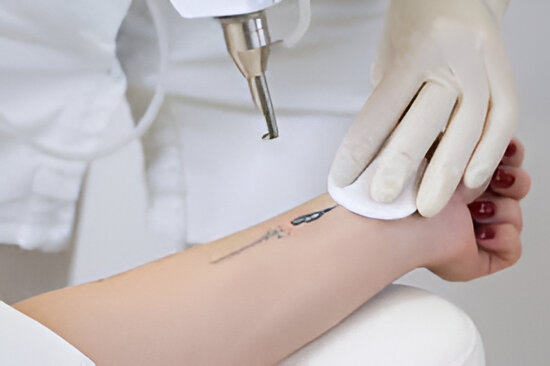
General
Can You Remove Part of a Tattoo? Selective Tattoo Removal Explained
Tattoos have increasingly become a popular form of self-expression, with millions of people worldwide opting for permanent ink to tell their stories, commemorate loved ones, or simply adorn their bodies with art. However, as life changes, so do personal tastes and circumstances. For some, this means reconsidering the permanence of certain tattoos or parts of them. But is it possible to remove just a portion of a tattoo, and if so, how is it done? In this article, we delve into the concept of selective tattoo removal, exploring the possibilities, limitations, and techniques involved.
Understanding Tattoo Removal
Tattoo removal is a process that involves breaking down the ink particles embedded in the skin so that the body can naturally eliminate them. The most common and effective method is laser tattoo removal, which uses concentrated light beams to target and shatter the ink. Over several sessions, the ink particles become small enough for the body's immune system to remove them, gradually fading the tattoo.
The process is safe and effective for most tattoo colors, though some shades, like green and light blue, can be more challenging to remove. The number of sessions required depends on various factors, including the tattoo's age, size, color, and the individual's skin type.
Is Partial Tattoo Removal Possible?
Yes, partial or selective tattoo removal is indeed possible. This technique is ideal for those who wish to remove specific parts of a tattoo while preserving the rest. Whether it's eliminating a name, a particular symbol, or an entire section of a larger piece, selective removal offers a customized approach to altering tattoos.
Selective tattoo removal requires precision and expertise. The laser technician must carefully target only the areas to be removed without affecting the surrounding tattooed skin. This is achieved by adjusting the laser's settings and using meticulous techniques to isolate the unwanted sections.
The Process of Selective Tattoo Removal
1. Consultation and Assessment: The first step in selective tattoo removal is a thorough consultation with a trained professional. During this session, the technician will assess the tattoo, discuss the desired outcome, and evaluate the skin type to determine the most effective approach. This is also an opportunity to discuss any concerns and set realistic expectations.
2. Customized Treatment Plan: Based on the assessment, a customized treatment plan is developed. This plan outlines the number of sessions required, the intervals between them, and any specific techniques that will be employed to achieve the desired result.
3 . Laser Treatment Sessions: The actual removal process involves a series of laser treatment sessions. For selective removal, the technician will use precision techniques to focus the laser energy only on the areas of the tattoo that are to be removed. This requires skill and experience, as the goal is to minimize any impact on the parts of the tattoo that are to remain intact.
4. Aftercare and Healing: After each session, proper aftercare is crucial to ensure optimal healing and reduce the risk of complications. The technician will provide specific instructions on caring for the treated area, which may include avoiding sun exposure, applying prescribed ointments, and keeping the area clean and moisturized.
Challenges and Considerations
While selective tattoo removal is feasible, it does come with challenges. The primary challenge is ensuring precision, as any overlap of the laser on the desired portions of the tattoo can result in unintended fading. Additionally, the process can be time-consuming and may require more sessions than complete tattoo removal due to the intricate level of detail involved.
Another consideration is the potential for pigment changes or scarring, which can occur with any laser treatment. Choosing a highly skilled and experienced professional can significantly mitigate these risks, ensuring the best possible outcome.
The Role of Technology and Expertise
The success of selective tattoo removal heavily relies on the technology used and the expertise of the technician. Advanced laser systems that offer adjustable wavelengths and pulse durations are crucial for targeting different ink colors and achieving precise results. Moreover, a technician with a keen eye for detail and a thorough understanding of laser physics and skin anatomy can make a significant difference in the outcome.
Toronto laser tattoo removal clinics are equipped with state-of-the-art technology and staffed by experienced professionals. This ensures that clients receive not only effective treatments but also personalized care tailored to their unique needs.
Conclusion
Selective tattoo removal offers a viable solution for those looking to modify or refine their body art without completely erasing it. By focusing on precision and customization, this technique allows individuals to adapt their tattoos to better reflect their evolving identities. However, the success of selective removal depends on various factors, including the skill of the professional and the technology employed. With the right approach, it is possible to achieve the desired changes while preserving the integrity of the original artwork.